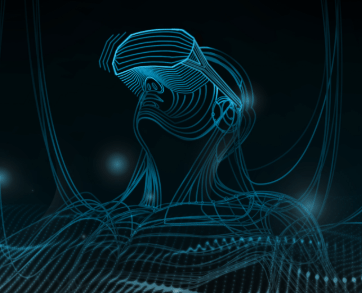Virtual Reality wasn’t a blockbuster attraction at this year’s CES, but there were a handful of announcements, and some of the most important of those came from HTC. While the “next big thing” buzz around VR has worn off for most, this industry pioneer keeps putting one foot in front of the other, building out its hardware, software, and services platforms and bringing to market real-world technical advances that position it well for long-term success in this market.
Eye Tracking Comes to Vive
AT CES 2018, HTC announces the Vive Pro headset. The product, which started shipping later that year, addressed one of the key pain points that both consumer early adopters and commercial users faced with the first generation Vive: A need for more resolution. The VIve Pro’s higher resolution OLED displays drive a notably better VR experience all around, but one of the key improvements was the ability to read text. This was a critical requirement of many companies looking to utilize the Vive Pro for training scenarios. At this year’s show, HTC once again announced plans for a much-requested feature: Eye tracking via the Vive Pro Eye.
There are numerous reasons why eye-tracking in VR can help to drive a better experience, the most straightforward being a simple one to explain. By tracking where a person is looking, the system need not constantly render and re-render a full virtual reality setting; it can focus on driving the most realistic view precisely where the user is looking (a process called foveated rendering). VR apps can also use eye-tracking technology to drive next-generation interfaces, where instead of selecting menu items using the click of a button on a handheld controller, the wearer makes selections with their eyes. Yet another use for the technology is to capture real-time data about what a person is looking at inside of an immersive experience.
It’s that last use case that I found particularly interesting, especially from a commercial use case perspective. At the show, I had the opportunity to try a software demonstration from the folks at Ovation that utilizes a VR setting to help people become better public speakers. The app works on prior Vive headsets, but the eye-tracking capabilities of the Vive Pro Eye significantly improve the value of the app by collecting precise data about where you’re looking during a practice presentation. The developers scanned in real people to serve as your audience, and they are constantly shifting and moving in their seats, all staring right at you. As you work your way through the presentation, the app captures how often you look around the room, how often you make eye contact with audience members, how long you stare at the teleprompter, how often (and how randomly) you move your hands, and more.
I’ve spent quite a bit of time testing out various VR apps, and I’ve seen and tested some very clever training-based products. I found the Ovation app to be stunning in the level of detail it captured, and I could see it becoming an invaluable tool in training people to become stronger public speakers. And it’s a great demonstration of the potential for eye-tracking technologies in VR. Once again, I think HTC has listened to business VR buyers and moved to bring to market something that many will embrace.
I look forward to seeing the VivePro Eye ship in 2019, and all the new use cases it will enable in the form of new apps in the future.
Other Key Announcements
In addition to Vive Pro Eye, HTC also announced plans for a new headset, called the Vive Cosmos, support for Mozilla’s Firefox Reality browser, and the launch of a new service called Viveport Infinity. HTC wasn’t ready to talk much about Cosmos, other than to say it will be another tethered headset, so the Mozilla and Infinity announcements are more interesting to me.
The Firefox Reality browser is a new browser for headsets, and HTC has announced it will support the browser across its entire hardware lineup. Why put a Web browser in virtual reality? It’s largely about letting users access 2D Web sites without having to drop out of VR, but it’s also possible to launch into full VR Web experiences. It’s good to see Vive throwing its support behind WebVR, as it could end up being one of the key ways consumers eventually embrace VR.
HTC currently offers Viveport subscription, varying in length from 3 to 6 to 12 months, and offering players full access to a limited number of apps per month, per subscription length. The service is a good one, as it allows consumers the ability to try out new VR apps without risking the full purchase price of a VR game or experience, they may not like. With Infinity, HTC will remove the limitations, allowing players to access as many titles as they like for an as-yet-undisclosed fee.
Infinity is a smart idea and one that ultimately seems to be a win/win for both consumers and developers. And it is representative of the good work HTC continues to do to build out a sustainable VR ecosystem for itself and its partners. VR didn’t capture too many headlines at this year’s show, but many in the industry continue to put in the work necessary to make it a viable business over the long haul.

Some really excellent info Sword lily I detected this.
I do not even understand how I ended up here, but I assumed this publish used to be great